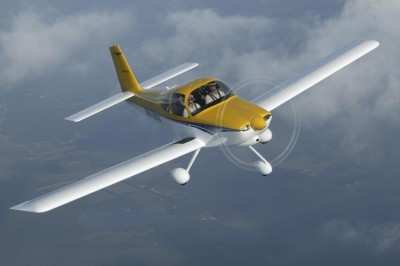Two Fatally Injured, Including 4-Year-Old Child. One Survives
The survivor of a Vans RV-10 accident which occurred on May 31 told the NTSB that the airplane suffered a "total loss of engine power" before going down, resulting in the fatal injury of the pilot and a 4-year-old girl.

According to the Board's preliminary report, the single-engine experimental Nebert Vans RV-10, N62DN, experienced a loss of power and departed controlled flight while the pilot was maneuvering for a forced landing in Toledo, Oregon. The private pilot and four-year old passenger were fatally injured; the adult passenger sustained serious injuries. The airplane was registered to and being operated by the pilot under the provisions of 14 Code of Federal Regulations Part 91. The personal flight departed Newport Municipal Airport, Newport, Oregon with a planned destination of Seattle, Washington. Visual meteorological conditions prevailed and no flight plan had been filed.
Numerous witnesses located in Toledo reported observing the airplane flying at a low altitude from the north. The witnesses reported hearing no sound from the airplane's engine and saw it progressively descend in altitude. The airplane approached the Georgia Pacific paper mill and made a steep turn to the left. The airplane subsequently made a rapid descent and impacted terrain in a nose-low near-vertical attitude.
The surviving passenger recalled the flight although was heavily medicated during the recounting of the events that transpired. She stated that she was in the aft right seat and her daughter was buckled in a car seat positioned in the aft left seat. Luggage was strapped in the front right seat in an effort to compensate for the aft weight. The departure seemed normal and the pilot commented that the engine sounded the best it ever had prior. The airplane continued the takeoff climb through some cloud wisps and ascended above a lower cloud cover, with an overcast layer above.
The passenger further stated that suddenly the engine experienced a total loss of power, which she described as the airplane stopping forward motion and there was no engine sound. An alarm sounded and shortly thereafter, all of the airplane electric system failed. She recalled observing the screen in front of the pilot flickered and then went blank. The pilot was busy pressing buttons and maneuvering levers and indicated that they were going to land at the closest airport [which was Toledo]. The airplane descended through clouds heading toward the airport. The pilot stated that they were going to make it to the airport and he was looking for a place to land. The airplane made an alert sound, which she thought indicated the airplane was moving too slow. The pilot made a left turn and tried to pull up but the airplane spiraled down harder to the ground.
The accident site was located in the paper mill adjacent to the Yaquina River in Toledo, Oregon, with the debris confined to the immediate area near the main wreckage. The closest airport to the accident was in Toledo, Oregon and was located 0.7 nm for the accident site on a heading of 192-degrees. The wreckage came to rest in a flat area which was a portion of dirt road on the perimeter of the mill. Surrounding the site were 20 ft high stacked bales of crushed cardboard boxes and a railroad track with parked train cars. Additionally, a northwest-southeast oriented 12 ft-diameter tubular conveyor was near the accident site that was about 70 feet high and 1,625 ft long.
The main wreckage, which consisted of nearly the entire airplane, was on a heading of 310 degrees. The initial point of impact consisted of a ground scar and disrupted dirt located about 25 feet and on the bearing of 220 degree from the cockpit section of the main wreckage. Embedded in the dirt were fragments of red lens and shards of paint and fiberglass, consistent with the left wing impacting first.
(Image from file. Not accident airplane)
 ANN's Daily Aero-Linx (04.17.24)
ANN's Daily Aero-Linx (04.17.24) ANN's Daily Aero-Term (04.17.24): Jamming
ANN's Daily Aero-Term (04.17.24): Jamming ANN's Daily Aero-Linx (04.18.24)
ANN's Daily Aero-Linx (04.18.24) Aero-News: Quote of the Day (04.18.24)
Aero-News: Quote of the Day (04.18.24) ANN's Daily Aero-Term (04.18.24): Hold-In-Lieu Of Procedure Turn
ANN's Daily Aero-Term (04.18.24): Hold-In-Lieu Of Procedure Turn



